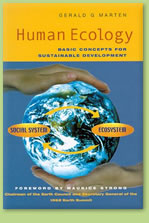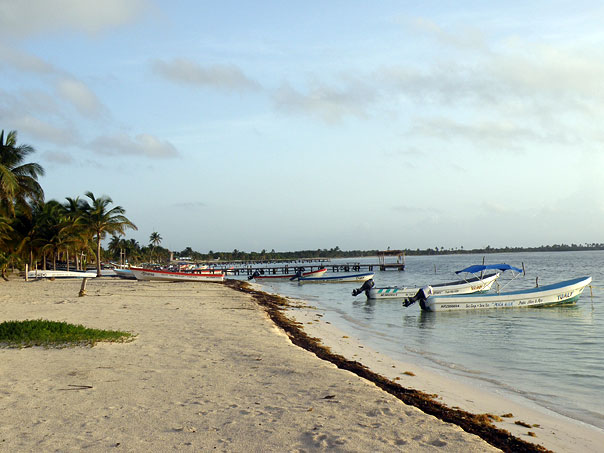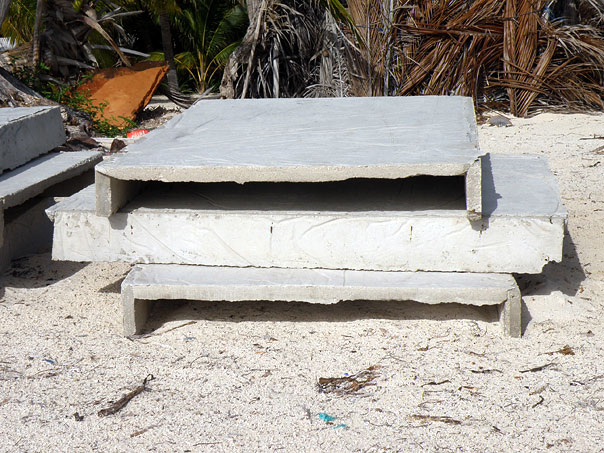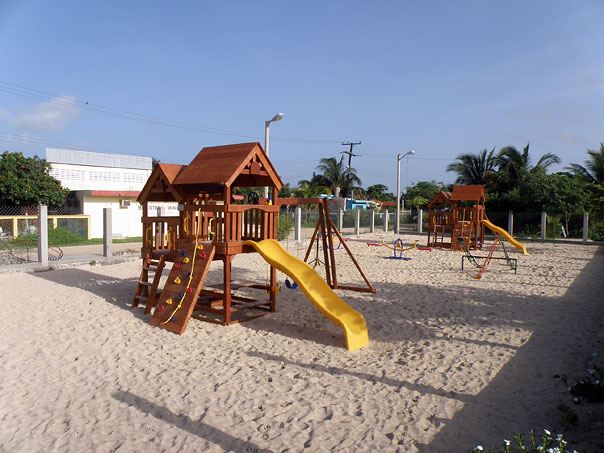EcoTipping Points
- How do they work?
- Leveraging vicious
cycles to virtuous - Ingredients for success
- Create your own
EcoTipping Points!
Stories by Region
- USA-Canada
- Latin America
- Europe
- Middle East
- South Asia
- Southeast Asia
- East Asia
- Africa
- Oceania-Australia
Stories by Topic
- Agriculture
- Business
- Education
- Energy
- Fisheries
- Forests
- Public Health
- Urban Ecosystems
- Water and Watersheds
Short Videos
- Saving a Coral Reef and Fishery (Apo Island, Philippines)
- Community Gardens Reverse Urban Decay (NYC, USA)
- Community Forests Reverse Tropical Deforestation (Thailand)
- Escaping the Pesticide Trap (India)
- Rainwater Harvesting and Groundwater Replenishment (Rajasthan, India)
How Success Works:
- Saving a Coral Reef and Fishery (Apo Island, Philippines)
- Community Gardens Reverse Urban Decay (NYC, USA)
- Community Forests Reverse Tropical Deforestation (Thailand)
- Escaping the Pesticide Trap (India)
- Rainwater Harvesting and Groundwater Replenishment (Rajasthan, India)

Human Ecology:
Principles underlying
EcoTipping Points
Mexico - Quintana Roo - The Vigía Chico Fishing Cooperative
- Author: David Nuñez
- Posted: January 2010
- Editorial contributions: Gerry Marten
A small fishing village on the Mexican Caribbean coast has become a model of sustainable lobster fishing by adopting a unique strategy for that region. By dividing up the ocean floor of their lobster fishing grounds, and issuing corresponding fishing rights, this community has avoided the “tragedy of the commons” that plagues many other fishing communities nearby. Key to this community’s success has been an uncommon respect for the law at all levels – from the Co-op regulations to state and federal laws. The successful management of their fishery has inspired similar community tourism enterprises. For all these reasons, the Punta Allen lobster fishery stands out as a successful example of sustainable natural resource management and is used as a case-study worldwide.
Deep within the Sian Ka'an Biosphere Reserve on Mexico’s Caribbean coast of the Mexican State of Quintana Roo, about 40 km south of Tulum, is the prosperous fishing village of Javier Rojo Gomez, better known as Punta Allen. It is a community unlike any other we know in Mexico. In addition to its privileged location, what makes this village unique is its commercial success. Ever since it was founded in 1968 it has been the regional leader in the lobster fishery, as measured both by total catch and the size of lobsters caught. Even more remarkable is the fact that the wealth from this industry is not concentrated in a local boss, but rather spread out among the fishermen, with many being wealthy enough to have second homes in Merida, or elsewhere in the Yucatan Peninsula. But one learns about these things after a while. Perhaps the first thing one notices is the town itself.
This is a small village, with a population of only several hundred, and access to electricity only a few hours a day. After traveling there for two hours on a bad dirt road, one expects to find the usual impoverished village of cardboard shacks and tin roofs. Instead, the houses are made of cement blocks. Many of them are rather large, and painted in bright colors. More important, there is a recycling center, a library, and a health clinic, as well as a very nice playground that seems eerily empty, because unlike other isolated rural communities in Mexico, Punta Allen has one of the lowest birth rates in the nation. In fact, since the mid-nineties, its population growth has been comparable to that of developed nations with the lowest birth rates (e.g., Russia and Estonia).

Beach/Punta Allen beach with lobster fishing boats.
In the 1930s the Federal Government granted exclusive fishing rights of the Caribbean Spiny Lobster (and other lucrative species) to fishing cooperatives. (These cooperatives are essentially the marine equivalent of Mexico’s ejido communal land system.) In the 1960s, island fishermen from the Cozumel Fishing Cooperative moved into the Punta Allen region on the mainland to fish for lobster. In 1968, primarily in response to their isolation from Cozumel island, 49 fishermen formed their own Coop, naming it Vigía Chico after the nearby center of coconut farming, which until then was the primary economic activity in the region. The current population of Punta Allen is around 400, with nearly 100 fishermen.
After a few false starts, the lobster fishery finally took off in the 1980s. Not only had the resort destination of Cancun grown enough to demand regular lobster shipments, but state and federal government investments in equipment allowed large enough catches to make the long trips to Cancun worthwhile.
But these opportunities also existed for other fishermen throughout the region. What makes the Punta Allen example so special? The simple answer is that while other cooperatives opted for an “open access” approach to lobster fishing, in which anyone can fish anywhere, the Vigía Chico Coop decided on a different strategy.
Back in the 1960s, when the village was even more isolated than it is today, its only contact with the rest of the world was by boat. Occasionally a group of Cubans would sail in to trade whatever they could. It was from these visits that the locals learned to use lobster shelters, also known as sombras or casitas Cubanas. Don Antonio Perreira, founder of the Coop, was the first to experiment with these shelters, making them from the Chit Palm. After the Sian Ka’an Biosphere Reserve was created in 1986, harvesting the palm tree was no longer allowed, and the locals experimented with flattened 50-gallon drums and asbestos sheets before settling on the current cement structures.

Cuban casitas/Shelters placed on the bottom of the ocean to attract lobsters. The lobsters are easily captured by lifting the shelters.
Harvesting lobsters usually requires teams of two: one to lift the shelter and another to sweep up lobsters with the butterfly net. The catch is then measured and examined for eggs, as fines can be stiff (nearly US$100 per undersize lobster or gravid female).
Lacking much reef, the Vigía Chico lobstermen are forced to capture juvenile lobsters in Ascención Bay. By placing these structures, they provide shelter from predators and thus increase the lobster population relative to what it would be without these artificial habitats. Because the building, placing, and maintenance of casitas requires a significant investment, the Vigía Chico Cooperative allotted property rights over “lots” of ocean floor, to prevent fishermen from fishing at shelters laid by someone else. These lots, known as campos were distributed to members, and may be renegotiated prior to each season.
To enforce these property rights, strict penalties are applied to those who break the rules. Fishing in someone else’s campo is punished by confiscating all equipment, including the boat, turning it over to the rightful owner of the campo and banishing the offending party from the Cooperative.
Equally important has been the support of the Mexican Courts in upholding the rights of the Cooperative. The first members to be expelled challenged the very notion of having “lots” in the ocean. After all, if the sea belongs to the nation, one could argue that all nationals should have access to it. However, the courts upheld that the fishing concession granted to Coops includes the rights to manage the fishery as deemed fit by Coop management.
Perhaps this is the reason why Federal laws are included in adherence to the rule of law in this village, something truly rare in rural Mexico. Those found fishing out of season are expelled from the Cooperative.
Over the years, other rules have been implemented to ensure the sustainability of the catch. With the creation of the Reserve, fishing with SCUBA gear was banned, drastically limiting the amount of lobster that can be caught. Fishing nets have also been banned, to the benefit of the area’s dolphins, sea turtles, rays, and other species. The use of hooks, which can injure or kill lobsters before they have been inspected, has been replaced by butterfly nets which allow fishermen to return gravid females or undersize lobster to the sea unharmed.
This respect for the rules, whether self-adopted, imposed by the Reserve management, or by distant state and federal authorities is perhaps the biggest mystery of Punta Allen. In a nation that almost seems to take pride in those that skirt the law, why does this tiny village in the middle of nowhere take the rules so seriously? “Everyone asks us that!” laughs Emilio Mendoza, a third generation resident and fisherman. Perhaps its isolation created a stronger sense of self-reliance and allowed the community to mature without the outside influence of corrupt officials. Perhaps a better question is, if this village can get it right, why can’t the rest of us?
In 1988 Hurricane Gilbert devastated the lobster fishery. This reminder of the fragility of their prosperity led the residents of Punta Allen to reflect on their long-term wellbeing. After investing in a community health clinic, all married females embraced contraception to limit the size of their families, using the popular family-planning slogan “pocos hijos, para darles más” (fewer children, to give them more). Now many children attend university, and many choose to return to fishing after graduating.

Playground/This playground is ample for the children of Punta Allen village, which has one of lowest birth rates in Mexico.
Hurricane Gilbert also landed the Coop in financial difficulties when plans for a regional lobster processing plant had to be abandoned, causing many members to leave rather than contribute paying their collective debt. Those that stuck through the hard times decided against readmitting former members and instead implemented a new rule stating that new memberships may only be extended to the children of current members. This rule, coupled with the low-birth rate, has helped maintain the Coop size relatively stable, further contributing to the sustainability of the fishery.
Impressively, the Vigía Chico Cooperative is undaunted by past failures, and is once again at the forefront of efforts to market its catch directly, skipping the middlemen they have relied upon in the past. Partnering with other Coops within the Sian Ka’an Reserve, as well as the Chinchorro Reserve further south, they recently formed Integradora de Pescadores de Quintana Roo, a collective business venture which markets their products directly to consumers under the brand name “Chakay”.
Government assistance obtained through the Federation of Fishing Cooperatives of Quintana Roo has been crucial at every step, from settling the village to obtaining financing and consulting services on their ventures. This type of federation has now been exported to other States in Mexico. And the Vigía Chico Cooperative experience itself has been replicated, with varying degrees of success, in neighboring Cooperatives and in communities on Mexico’s Pacific and Gulf coasts. This model has also been applied in Panama, the Dominican Republic, Belize, and Honduras.
Students and researchers from Mexican and American universities are regular visitors to this isolated community. The United Nations Development Program and World Bank use the Vigía Chico Cooperative as a successful case study, and the Cooperative proudly displays an Equator Prize award obtained in 2007 at its offices in the city of Tulum.
The success of the lobster fishing cooperative has spilled over into other community ventures. More recently the community has embraced eco-tourism as an alternative source of income, particularly during the off-season from February to July. Though sport-fishing had been a small side-business since the mid 1970s, the options for tourists have exploded since the late 1990s. There are now four different Tourism Cooperative ventures that offer snorkeling, bird watching, and dolphin-sighting tours as well as lodging. Tourism is fast catching up with lobster fishing in terms of income generated. Though some conflicts have arisen among the various enterprises, they are minimized by the fact that many fishermen belong to both the Fishing Cooperative and to one of the Tourism Cooperatives. There is a widespread understanding that one cannot engage in both activities simultaneously, as doing so would cheat one’s own associates.
With economic growth other changes have come to town, and everyone says it is no longer the same place they grew up in. This sophisticated community is wary of what runaway development has done to resort destinations like Cancun and Playa del Carmen, and does not trust that their location within the Biosphere Reserve will spare them the same fate. And though the community welcomes all those who wish to study and learn from their experience, it is also fighting to limit harmful outside influences. Herencia Punta Allen (Punta Allen Heritage) is a non-profit foundation that, among other things, opposes paving the road that links them to the outside world. They say their village is a paradise, and as such, should be hard to get into. I agree, and wish them the best of luck.

